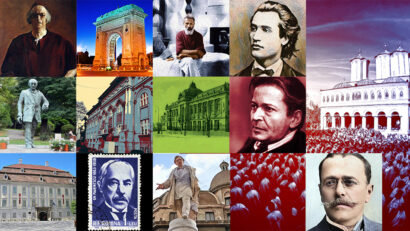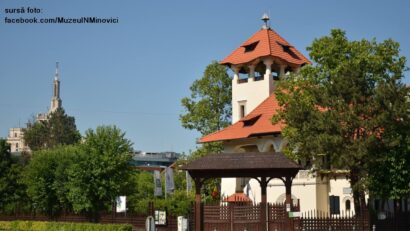Heritage buildings in Constanta
While for most people Constanta is synonymous with the sun and the sea, the city is also home to many heritage buildings.

Christine Leșcu, 09.05.2015, 14:09
The beach, the sea, the Aquarium and the Casino are Constantas main tourist attractions. The citys historical and ethnic diversity is mirrored in its landmark buildings.
The Art Museum, for instance, hosts an impressive collection of works of art by renowned Romanian fine artists. The museum was set up in 1961 around a painting and sculpture exhibition, with items donated by the artists themselves or borrowed from the Town Halls art collection. The building that hosts the museum is also a heritage building. Designed by architect Ion Socolescu and built between 1891 and 1893, it originally hosted the Romanian School in Constanta. Paintings and sculptures by artists like Nicolae Grigorescu, Theodor Aman, Jean Steriadi, Ion Andreescu, Cornel Medrea, Dimitrie Paciurea, Ion Tuculescu, Ion Jalea, Vida Gheza, Theodor Pallady, Corneliu Baba and many others are on display in the two buildings.
The Art Museum in Constanta has been reopened recently, after a long period of refurbishment. Its director, Doina Pauleanu, tells us more about it:
“We have taken all the paintings out of the deposit in order to pick the most important and representative ones, or to create a highly coherent series of paintings. We now have dedicated rooms for almost every great Romanian modern artist. Having to remove one or several works from the permanent exhibition was a very difficult thing to do. Thats why we came up with the idea of a temporary exhibition, which shows in fact that in a large museum, the ratio between the exhibited and the stored items is in favor of the latter. The storage rooms include more items than the ones on display. Our storage room includes works by Tonitza, Sirato, Dimitrescu, Pallady, Petrascu and many others, which are now part of a temporary exhibition entitled The museum from the storage room. It gives visitors the chance to see works that have been displayed on rare occasions.”
Dating back to the end of the 19th Century, the building that currently hosts the Art Museum in Constanta was erected at a time when Dobruja was a prosperous area. After being part of the Ottoman Empire for a long time, the province once again joined Romania after the independence war of 1877-1878. Doina Pauleanu:
“Dobruja became a part of Romania again after the Independence War of 1878. People who came to this place from other parts of Romania used to feel exiled, but wanted to leave some marks of their presence there. Few people know that the sea front in Constanta is artificial, being the result of the reformist thinking of the Constanta-based engineer Scarlat Varnav, head of the National School of Bridges and Roads in Bucharest, and of the courage of Anghel Saligny, who took up such a difficult task, considering that he had already started construction works on the port. This is an extraordinary area, an area of confluences, a multiethnic space where empires were formed and dismantled and which migratory peoples had crossed on their way to Constantinople, the worlds capital at that time.”
In an inter-ethnic and inter-religious space, religious tolerance was crucial, and it was King Carol I who created the circumstances for its preservation. Doina Pauleanu:
“Symbolically, the two most important examples of religious architecture, after Dobrujas union with Romania, were the Cathedral of St. Apostles Peter and Paul and the Royal Mosque, erected with funds from the Romanian state on the location of an old mosque. Part of the old sacred furniture was left in the royal mosque. King Carol I had this initiative, in an attempt to prove that in Greater Romania, religious tolerance was extremely important. All the buildings in the city, since the Union and up until 1914, were erected thanks to the kings extraordinary openness towards this area and of his great understanding of Dobrujas geopolitical importance.”
For a better understanding of the culture and history of Constanta, a visit to the Art Museum must be followed by a walk through the citys old district.





























